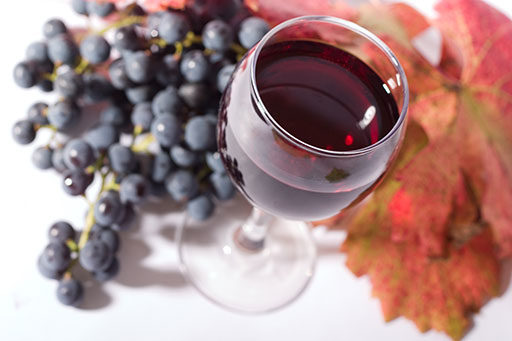5 Cellar Door Wine Tasting Tips to get you started
When taking small groups of fun Foodies out on a full day Tour Cellar Door Wine Tasting and exploring our beautiful Adelaide gourmet food and fine wine regions, the question is sometimes asked of me;
“Hey Armin- what’s the proper way to taste wine, I’m new to this sort of thing?”.
Well, my take on that question is this:
A lot’s been written about cellar door wine tasting etiquette in wine mags and on websites, but the fact remains; you are TASTING wine, and hopefully more than 1, which you might not have tried before. Like any other food or drink you would have experienced for the first time as you’ve grown up, it should be an exciting moment of discovery, not self-conscious awkwardness.
I believe there are no hard and fast rules, the do’s and dont’s vary, but here are my:
Shiraz & Co Tour Top 5 Cellar Door Wine Tasting Tips
or
“The Shiraz&Co 5 S’s”
 Step 1 – See
Step 1 – See
Start by holding the glassware by the stem. A good habit to adopt so that you avoid affecting the temperature of the small sample and getting the glass greasy. I’m the No. 1 culprit of the “that must be your glass, look at all the greasy prints”.
Then hold it up and find some back light to illuminate the wine… (won’t see much for the greasy prints??).
Note the colour, intensity and how translucent the wine is. There are lots of factors which affect the visual appearance; variety, filtration, age and many more. But try to focus on just these 3 visual criteria, i.e. bright herbaceous green vs slightly cloudy pale straw etc. to begin with.
Step 2 – Swirl
Hold the glass and gently swirl the wine a little. Keep the glass flat on the bench when you first start to reduce the risk of ‘woops I’m sorry’, if you are like me or especially after the first few cellar doors.
Swirling helps release aromas as it gets the wine moving, passing more air over it. Some of the volatile components are released softening the wine a bit and it allows you to determine the viscosity of the wine more easily.
Viscous wine will cling to the glass. Watch the rate it moves down the inside of the glass as it returns to the bottom. The ‘legs’ or ‘tears’ people mention relate to the drops and streaks or runs that more viscous wines leave. This relates to alcohol and sugar content. It’s a known fact – too much alcohol can lead to streaks and that can end in tears.
Step 3 – Smell
This is where it becomes subjective, as aroma profiles are described in so many different terms. These vary from prominent to subtle, some more easily identifiable than others. The technical talk is primary, secondary and tertiary aromas, but this is more information than you may need to describe a wine you enjoy.
Like with food, we have favourite smells and particular aromas we relate to differently, some with fondness, others not so much. It’s handy to use the tasting lists to note down dominant aromas, as a reminder and guide for later. After tasting several wines, it is sometimes hard to remember and it is a great tool for food matching, where choosing complementary aromas may be important.
There are lots of chemical compounds involved, many with tell-tale aromas, some deemed advantageous and some not. Unless you are a wine maker, judge, collector or such, if you rate the smell as ‘pleasant’ or ‘not’, this will suffice I think.
Step 4 – Sip
Tasting is subjective again, due to individual preferences. Some flavours are more obvious than others, and the likeness references used are extensive, depending on your own repertoire.
Typical comments at this stage are in terms of describing sweetness, acidity and tannin characteristics. These are worthy of noting too, as they align with preferences and the information will often come in useful later. Comparisons can be made, conclusions drawn, and favourites can (and will) be chosen.
There is the issue of ‘slup vs sip’. That’s getting that extra bit of air to help with the taste sensations. This is again personal preference. Often parental advice about good manners when we were children makes this more uncomfortable than it should be. Try it I say, it’s more fun than you think. But avoid simultaneous laughing!!!
Step 5 – Spit
Spit is great when you consider total alcohol consumption, as it’s often underestimated on a full day touring and cellar door wine tasting. Also, the increasing alcohol level slowly deprives us of our finer sensory capacity, as the tastings start to add up.
Swallow is often the obvious and only option however, especially when the wine ticks all the right boxes, or as many of my guests call it “simply delicious” or “I could sit down here with my friends and drink a whole bottle(s) of this over the rest of the afternoon”
I hope the message you took away was this – drinking wine with good friends is fun and wine tasting should be too, and leave the serious side to the serious people…seriously.
PS: A Few Other Tips
Reserve Judgement
There is the belief that it is un-courteous to voice your opinion in an overly exuberant way (try that after stopping at 5 wineries) before everyone in the group has had their fair time to taste, contemplate and form their own opinion.
This has probably got something to do with behavioural psychology; the odd one out, go with the group, follow the leader and all that other complicated stuff. So taste, think and then share your thoughts freely. There are always the tasting notes or a helpful head’s up from the cellar door staff, advice about what you can (or is that should?) expect, which will help.
The Water
Most good cellar doors provide water to allow you to quench your thirst, rinse your mouth between wines or at least when you change from white to red or fortified, and to rinse your glass in some situations. It is also the polite way to stay with the group and sober, before you get drunk, as drunk is typically frowned upon by cellar door staff.
The Crackers
Feeling peckish?? As far as alcohol goes, tasting on an empty stomach is not ideal, but note that the crackers alone will not be enough. Try for a proper meal well before you start cellar door wine tasting. They are sometimes available and meant as a palate cleanser, as bland crackers help to get rid of lingering flavours where water fails.
I hope this lot helps. I would love to hear your feedback and hope to see you on tour with us one day soon.
To book a tour call me on 0411752062 or email me at [email protected].
Regards
Armin



